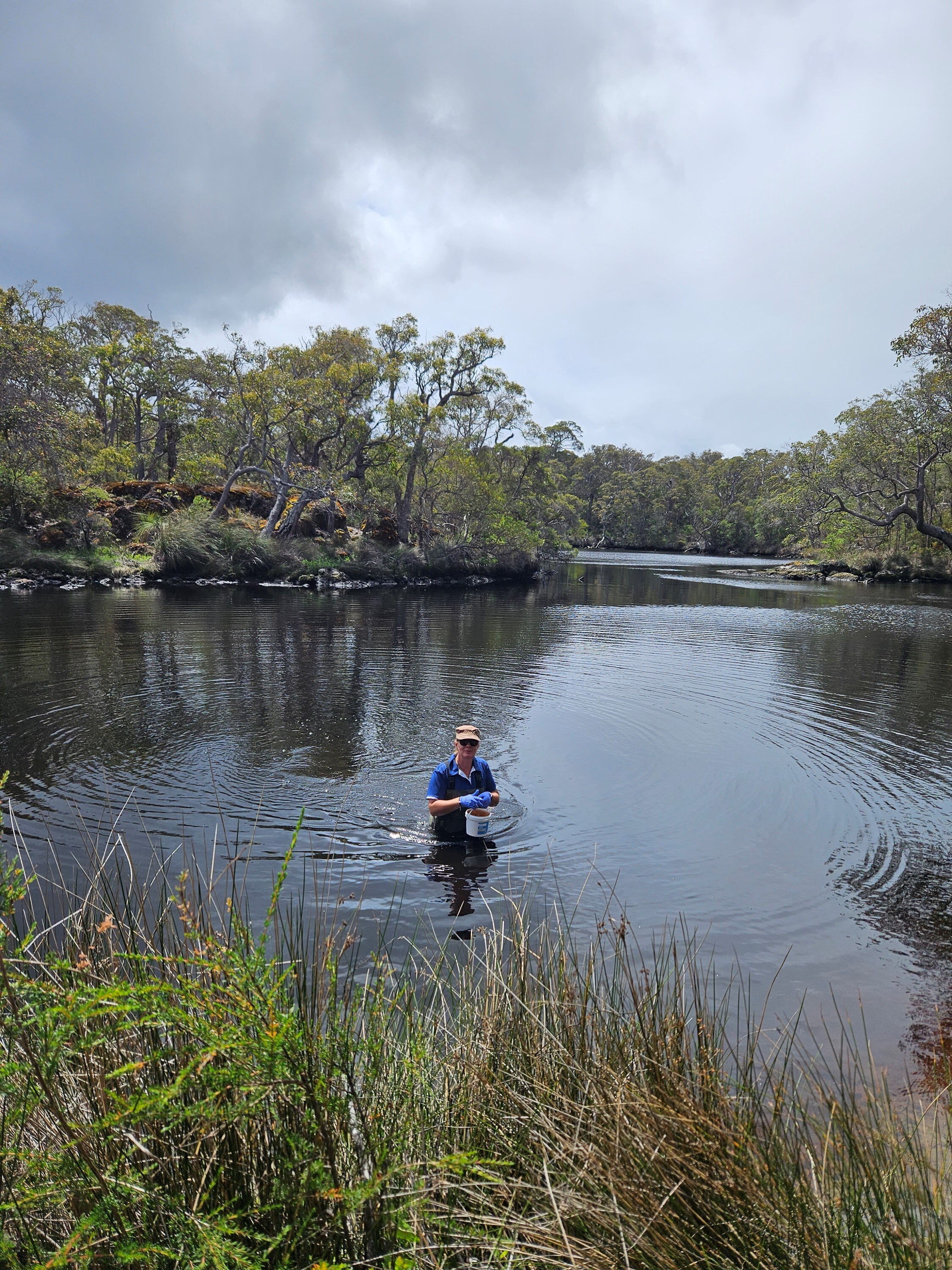19 agosto 2025
Environmental DNA (eDNA) is a novel biodiversity monitoring technique that can detect biological material that organisms leave in their terrestrial or aquatic habitats. This material can be isolated from various substrates, such as water, soil and air.
Recognising the potential of eDNA as a monitoring tool, BHP has funded Curtin University’s eDNA for Global Environment Studies (eDGES) program since 2020 through our social value framework. The eDGES program is a research-based program focused on developing and applying eDNA techniques to help address global threats, such as biodiversity loss.
Professor Morten Allentoft, head of the Trace and Environmental DNA (TrEnD) Laboratory at Curtin, said the research is uncovering valuable insights into the challenges different species are facing.
“Living organisms leave behind traces of DNA in water, soil or air and we can use these genetic breadcrumbs to monitor the health of habitats, track endangered species and detect invasive ones.”
“Over the past five years, our eDGES program has delivered new high precision biomonitoring tools and provided fundamental new knowledge on biodiversity in threatened ecosystems,” Professor Allentoft said.
In collaboration with Curtin University, we piloted an innovative project at Copper South Australia. It has since expanded to other assets, including Western Australia Iron Ore (WAIO) and legacy assets sites in the United States and Canada. The project set out to:
- understand the biological diversity in the areas where we operate to help enhance biodiversity outcomes by applying the mitigation hierarchy, and measuring changes in species presence over time using eDNA as a monitoring tool
- build on the taxonomic reference librairies important for deciphering eDNA sequences
Curtin University provided in-person training to BHP team members undertaking eDNA sampling in the field and conducted laboratory analysis to identify the eDNA of species in the collected samples. In this case, we collected water samples using non-invasive techniques, as opposed to traditional biodiversity monitoring methods that are often time consuming and require specialist taxonomic expertise.
Twenty sample sites across WAIO’s Pilbara operations, 6 from our Beenup legacy asset site in Western Australia, 8 across North American legacy asset sites and 14 spring groups across Copper South Australia have been sampled through the project. To date, the analysed data has recorded 153 species from WAIO’s Pilbara operations, 85 species from Beenup, 66 species from North American legacy asset sites and 46 family groups from Copper South Australia’s Great Artesian Basin spring groups.
The application of novel monitoring techniques for identifying biological species is expected to play an integral role in supporting societal efforts to halt and reverse the ongoing decline in global biodiversity. For example, eDNA monitoring can assist in monitoring change in species diversity in response to an emerging threat such as shifting climatic conditions, increasing frequency and intensity of fires, and introduction of invasive pests or disease.
Another highlight from the initial phase of the eDGES program was sequencing and assembling the first complete genome of the Pilbara olive python, listed as a ‘Threatened Species’ of National Environmental Significance under Australia’s Environment Protection and Biodiversity Conservation (EPBC) Act 1999. This was done in collaboration with the globally linked Vertebrate Genome Project (VGP) and will help improve the quality of biomonitoring via eDNA for the Pilbara olive python.
In FY2025, we reaffirmed our commitment to the eDGES program by contributing a further A$6.25 million in funding and extending the program for another four years. The program expands previous projects such as eDNA monitoring strategies for the Pilbara’s diverse reptiles, long-term rehabilitation monitoring of Chile’s Punta Negra salt flat and advancing high-precision eDNA technology for early detection of invasive marine species.
BHP’s Head of Biodiversity, Dr Tim Cooper, said BHP is proud to support innovative projects like eDGES.
“The TrEnD Laboratory eDGES program has the potential to create a new generation of biodiversity conservation tools to help industry and government make informed decisions.”
“The program is helping to fill knowledge gaps for better biodiversity and conservation outcomes to help us improve sustainability in our mining processes, while also training the next generation of genetic and data scientists,” Dr Cooper said.
For more information on the projects included in this next stage of the eDGES program, refer to Curtin University’s media release.

Image caption and location: Collection of water samples adjacent to former Beenup Titanium Minerals Project for eDNA analysis
